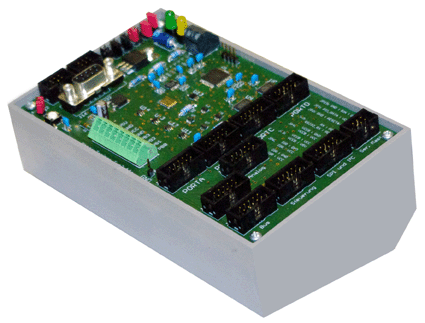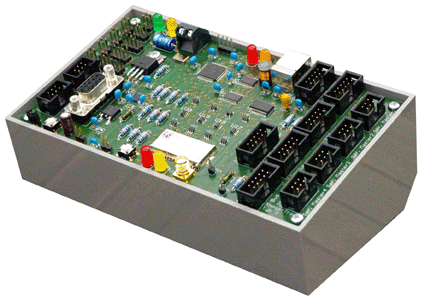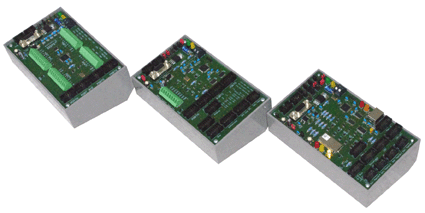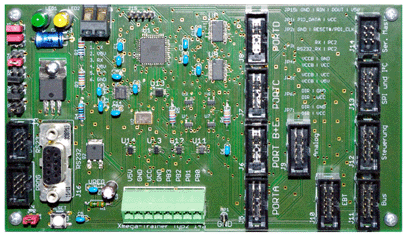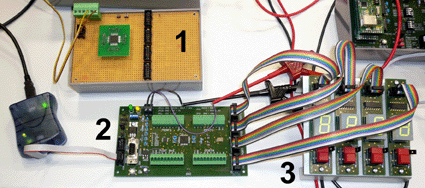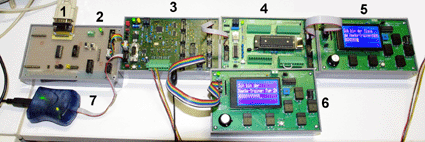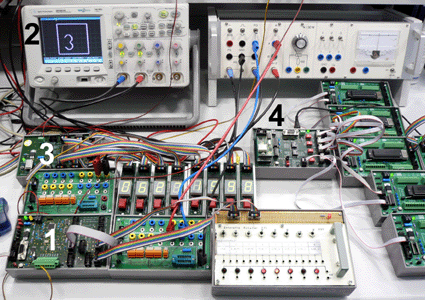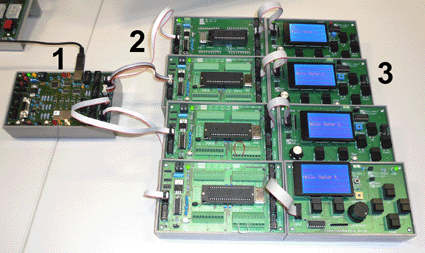 |
|
Projects: XMega Trainers
|
|
|
|
The Atmel Xmega microcontrollers are lavishly equipped with functional units. The processor core, however, is much more straightforward than, for example, an ARM or MIPS core. Hence those microcontrollers are well-suited for ambitious beginners and students who want to become familiar with more sophisticated controller ICs, where complicated I/O units are to be employed appropriately, problems of level translation are to be tackled and the like. The XMega Trainer Type 1 The most straightforward module without level translation except for the serial interface. All I/O pins are easily accessible via pin headers or terminal blocks. One serial interface is provided. It can be configured for 5 V or RS-232 signal levels.
The XMega Trainer Type 2 A module with level-translation provisions aimed at general-purpose applications. All I/O pins are easily accessible via pin headers. The 5-V-interfaces comprise one bidirectional 8-bit-bus, eight outputs, two serial interfaces and one SPI interface. An extra connector provides four bus and four control signals, so that a general-purpose human interface module can be attached. (The human interface module is thought as some kind of basic console.)
The XMega Trainer Type 3 Above all, this module is an active hub to build multiprocessor systems with. It has one slave or upstream interface and four master or downstream interfaces (like USB, but much simpler). The slave interface can be configured as serial 5 V, RS-232, USB or Bluetooth. Additional interfaces are a bidirectional 8-bit-bus, eight outputs, SPI, and I2C. Similarly, to the type 2, a general-purpose human interface module can be attached, serving, for example, as console or troubleshooting aid.
Some supplementary pictures: Type 1
Type 2
Type 3
Xmega trainers are inspected meticulously:
Xmega trainers during bring-up:
1 - the first experimental XMega board; 2 - Xmega trainer type 1; 3 - seven-segment displays 09. Here a time-of-day clock has been programmed.
1 - serial connection to a personal computer; 2 - passive hub (used for level translation); 3 - Xmega trainer type 2 4 - microcontroller module attached as a slave; 5, 6 - human interface modules, serving as debugging consoles.
1 - Xmega trainer type 2; 2 - XY-presentation employing the Xmega’s DACs; a CPLD module serving as a time-of-day digital clock (24 hours, 0,01 s resolution); 4 - a multiprocessor configuration, consisting of four microcontroller modules attached to a passive hub.
Xmega trainer type 3 as a communications hub in a multiprocessor system. 1 - USB connection; 2 - slave modules. The cables provide for serial communication as well as for power supply. 3 - each of the slave modules has its own debugging console.
|
|
|
|
September 15, 2014 The web page has been set up. |
